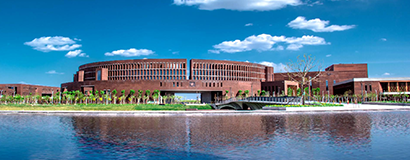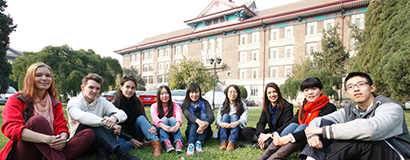Wen Chuanyuan was one of the early pioneers in the field of Aircraft Control, Guidance, and Simulation. He has long been committed to the teaching, research and work in the field
and has trained a large number of specialists, making major contribution to the development of automation science and technology in China.
Fellow Li Bohu, Dean of the School of Automation of Beihang University, stated in his speech on the 50th Anniversary of the school that, “the first unmanned aerial vehicle (UAV) in China, ‘Beijing No. 5’ was successfully built under the leadership of Professor Wen Chuanyuan as the chief designer; from 1970s to 1980s. The first Full-Mission Simulator in China was successfully built by Professor Wen Chuanyuan and Professor Wang Xingren.
Wen Chuanyuan was born in Hengshan County, Hunan Province on June 22, 1918. He was admitted in February 1939 to the Department of Aeronautical Engineering in the Northwest Institute of Technology (the former Aeronautical Team of Peiyang University and graduated in 1943. After his graduation, he was assigned to the positions of technical support and aircraft instrument teaching in Guilin No.4 Aircraft Factory of the Aviation Council (later changed its name to the Air-force of the Chongqing Republic Government) and at Jianqiao Flying School.
In July 1949, the Hengyang Work Committee of the Communist Party of China appointed Liu Guoan as commander of the 2nd Regiment of Southern Hunan 2nd Guerrilla, and Wen Chuanyuan as the political commissar of the 2nd regiment. After the Liberation Army made its way southward, Wen Chuanyuan returned to work with the Hengyang Work Committee of the Communist Party of China. In December 1949, he was transferred to the training department of the People’s Air Force in Beijing via the Political Department of the Fourth Field Army.
Wen Chuanyuan started the technical exploration of UAV in China. In 1957, Wen Chuanyuan proposed an overall technical project plan for the study and building of UAV. The proposal was forwarded to Premier Zhou by Wu Guang who was the president of the Beijing Aviation Institute. After receiving the approval on June 19 1958, tens of teachers and technicians from the Department of Aircraft Equipment, with relevant personnel from other units, started to develop the UAV. Apart from the aircraft and engines, other systems that were redesigned and remodeled included the control system of the engine RPM and temperature; modification and installation of the AП—5 autopilot; control system of the flight program (switch, combination and control of various flying modes); aircraft automatic take-off system; aircraft automatic landing system, airborne radio remote-controlled signal receiver system; airborne radio telemetry signal sensor, launching system; aerial system; radio altimeter; ground radio remote control signal emission system; ground radio telemetry signal receiver system; pilot ground control UAV console; ground current source; and the ground simulation testing devices.
The project started on June 29, and was almost completed before the National Day on October 1. The remote-controlled flight and radio guided landing went through preliminary testing. With the joint efforts of people on and off campus, the first UAV, with the cabin door being locked under the supervision of senior officials from the air-force, aviation departments and the Beijing Municipal Government, was tested. There was indeed no pilots. The UAV flew into the sky in February 1959 was finished and guided by the remote control, a series of flying modes, and a certain range of flying route. It automatically landed safely. That was the first successful flight of the UAV in China, and started a new era of the development of UAV technology in China.
Wen Chuanyuan developed the system simulation theory and innovated the application of simulation technology. When he organized and supervised the development of the first UAV in China, he utilized the link trainer in the simulation tests of the launch, reception and control of the flight with radio remote-controls, which secured the safety of the trial flight of the UAV. In 1962, he was appointed as the director of the newly founded Department of Missile Automatic Control and the director of the 8th Laboratory (Control Lab). Apart from fulfilling the research tasks, he also accomplished the building of an attack simulation of infrared guided air-to-air missile composed of a rotary stage with one degree of freedom, infrared Target Simulator, and a simulation computer. This was the first such attempt of its kind in China.
In 1975, Wen Chuanyuan worked as the team-leader and designed the fighter plane’s flight simulator. The flight simulator passed the state tests, and filled the gap. In 1985 the project was awarded the first prize of the National Science and Technology Progress Award, as well as the first prize of the National Computer Application Award.
In 1979, the Chinese Association of Automation founded the System Simulation Committee. In 1988, the Chinese Association of System Simulation was approved and established by the State Scientific and Technological Commission, and Wen Chuanyuan was elected as the chairperson at the first board meeting.
In 1989, Wen Chuanyuan worked as the academic leader of the PhD program of “aircraft control, manufacture and simulation”. Apart from the study of flight control system design, integration, decentralized control and distributed computer systems, and its reliability, system simulation, expert system, and intelligent controls, the study of “System Theory and Human Body Science” was added. Preliminary results have since been achieved.







